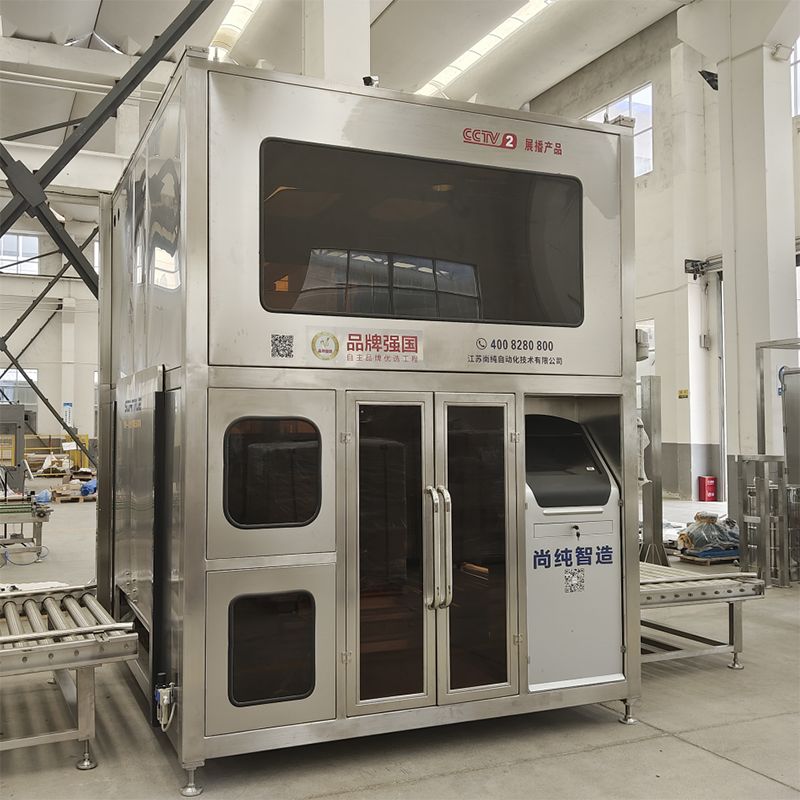Types of Chemical Liquid Filling Machines
2024-06-12
A chemical liquid filling machine is a specialized industrial equipment used for accurately and efficiently filling containers with various types of chemical liquids. These machines are designed to handle the unique characteristics and properties of chemical liquids, including their viscosity, corrosiveness, and potential hazardous nature. Here's an overview of chemical liquid filling machines:
Functions and Features
1. Accurate Filling:
- Chemical liquid filling machines are equipped with precision filling mechanisms, such as piston fillers, peristaltic pumps, or gravity filling systems, to ensure accurate and consistent filling volumes.
2. Chemical Compatibility:
- These machines are constructed using corrosion-resistant materials, such as stainless steel or specialized plastics, to withstand contact with aggressive chemical liquids without degradation or contamination.
3. Safety Measures:
- Safety features, such as fume extraction systems, explosion-proof electrical components, and leak detection sensors, are incorporated to prevent accidents and ensure operator safety when handling hazardous chemical liquids.
4. Cleaning and Sterilization:
- Chemical liquid filling machines are designed for easy cleaning and sterilization to maintain product purity and prevent cross-contamination between different chemical liquids. They may feature quick-change parts and tool-less disassembly for efficient cleaning procedures.
5. Flexible Configuration:
- These machines can be configured with single or multiple filling heads, variable speed controls, and customizable filling parameters to accommodate a wide range of container sizes, shapes, and filling requirements.
6. Integration with Production Lines:
- Chemical liquid filling machines can be integrated into automated production lines or operated as standalone units, depending on the specific production needs and workflow requirements.
7. Compliance with Regulations:
- Filling machines for chemical liquids are designed to meet industry standards and regulatory requirements for product safety, quality control, and environmental protection, such as FDA, cGMP, and OSHA regulations.
Types of Chemical Liquid Filling Machines
1. Overflow Fillers:
- Suitable for filling foamy or volatile chemical liquids, overflow fillers use a fill nozzle that submerges into the container and fills it to a predetermined level, creating a consistent fill height regardless of variations in container shape or size.
2. Piston Fillers:
- Piston filling machines use a piston mechanism to draw chemical liquid from a reservoir and dispense it into containers with precise volumetric control. They are ideal for filling viscous or thick liquids, such as oils, syrups, and creams.
3. Peristaltic Fillers:
- Peristaltic pump fillers employ a rotating roller system to squeeze flexible tubing and dispense chemical liquid through a fill nozzle. They are suitable for filling small volumes of liquid, highly corrosive liquids, or liquids with particulate matter.
4. Gravity Fillers:
- Gravity filling machines rely on the force of gravity to fill containers with chemical liquid. They are simple and cost-effective for filling non-viscous liquids, such as water, solvents, and cleaning agents.
5. Net Weight Fillers:
- Net weight fillers use load cells or scales to measure the weight of filled containers and adjust the filling volume to achieve the desired net weight. They are commonly used for filling chemicals sold by weight, such as paints, detergents, and fertilizers.
Considerations for Selection and Operation
1. Chemical Compatibility:
- Ensure that the materials of construction and sealing components of the filling machine are compatible with the specific chemical liquids being filled to prevent corrosion, contamination, or chemical reactions.
2. Production Capacity:
- Select a filling machine with the appropriate speed and throughput capacity to meet the production requirements and demand volume of the chemical liquid manufacturing process.
3. Cleaning and Maintenance:
- Implement regular cleaning and maintenance protocols to ensure the proper functioning and longevity of the filling machine, minimizing downtime and maximizing productivity.
4. Operator Training:
- Provide comprehensive training for operators on the safe and proper operation of the chemical liquid filling machine, including handling of hazardous chemicals, troubleshooting, and emergency procedures.
Conclusion
Chemical liquid filling machines are essential equipment for accurately and efficiently filling containers with various types of chemical liquids in industrial manufacturing settings. With their precision filling mechanisms, chemical compatibility, safety features, and flexibility, these machines play a critical role in ensuring product quality, consistency, and regulatory compliance. By selecting the appropriate type of filling machine and implementing proper operating procedures, manufacturers can optimize their chemical liquid filling processes for maximum efficiency and productivity while maintaining the highest standards of safety and quality.



